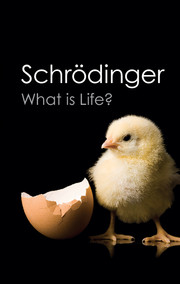Book contents
4 - THE ARITHMETICAL PARADOX: THE ONENESS OF MIND
Published online by Cambridge University Press: 05 September 2014
Summary
The reason why our sentient, percipient and thinking ego is met nowhere within our scientific world picture can easily be indicated in seven words: because it is itself that world picture. It is identical with the whole and therefore cannot be contained in it as a part of it. But, of course, here we knock against the arithmetical paradox; there appears to be a great multitude of these conscious egos, the world however is only one. This comes from the fashion in which the world-concept produces itself. The several domains of ‘private’ consciousnesses partly overlap. The region common to all where they all overlap is the construct of the ‘real world around us’. With all that an uncomfortable feeling remains, prompting such questions as: Is my world really the same as yours? Is there one real world to be distinguished from its pictures introjected by way of perception into every one of us? And if so, are these pictures like unto the real world or is the latter, the world ‘in itself’, perhaps very different from the one we perceive?
Such questions are ingenious, but in my opinion very apt to confuse the issue. They have no adequate answers. They all are, or lead to, antinomies springing from the one source, which I called the arithmetical paradox; the many conscious egos from whose mental experiences the one world is concocted.
- Type
- Chapter
- Information
- What is Life?With Mind and Matter and Autobiographical Sketches, pp. 128 - 139Publisher: Cambridge University PressPrint publication year: 2012



